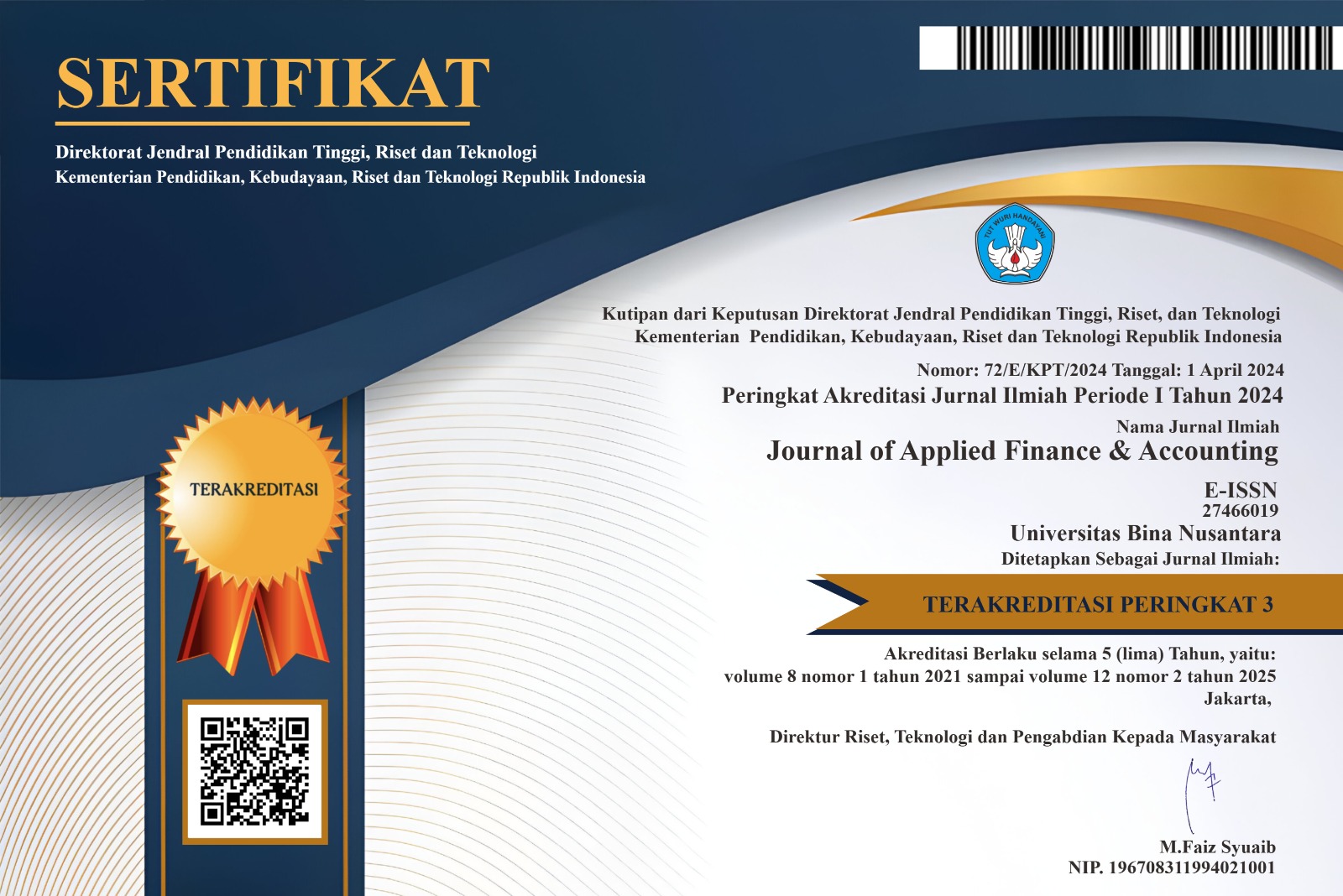ANALISIS PENGARUH RISIKO KREDIT TERHADAP IMBAL HASIL SAHAM PERBANKAN DI BURSA EFEK JAKARTA PERIODE TAHUN 2001-2005
DOI:
https://doi.org/10.21512/jafa.v4i1.282Keywords:
stock returns, credit risk, CAR, NPL, PPAP.Abstract
Banks have an important role in the economy and serves as a financial intermediary. Credit risk, as one of indicator of the health of the bank, is an interest of all stakeholders including investors stock.
This study was conducted to determine the effect of credit risk on bank stock returns listed on the Jakarta Stock Exchange.
The sampling method performed on 8 banks for a sample of meeting the requirements of the study. Credit risk data consisting of CAR (Capital Adequacy Ratio), NPL (Non Performing Loans) and PPAP (Removal of Assets Allowance) financial ratios derived from the quarterly during January 2001-December 2005. The stock prices are taken from the weekly closing stock price data weekly during January 2001-December 2005. Tests using multiple regressions were conducted to determine the effect of credit risk on stock returns. The results show that jointly or individually no significant effect on credit risk with stock returns.
Downloads
Published
Issue
Section
License
Authors who publish with this journal agree to the following terms:
Authors retain copyright and grant the journal right of first publication with the work simultaneously licensed under a Creative Commons Attribution License that allows others to share the work with an acknowledgement of the work's authorship and initial publication in this journal.
Authors are able to enter into separate, additional contractual arrangements for the non-exclusive distribution of the journal's published version of the work (e.g., post it to an institutional repository or publish it in a book), with an acknowledgement of its initial publication in this journal.
Authors are permitted and encouraged to post their work online (e.g., in institutional repositories or on their website) prior to and during the submission process, as it can lead to productive exchanges, as well as earlier and greater citation of published work (See The Effect of Open Access).




